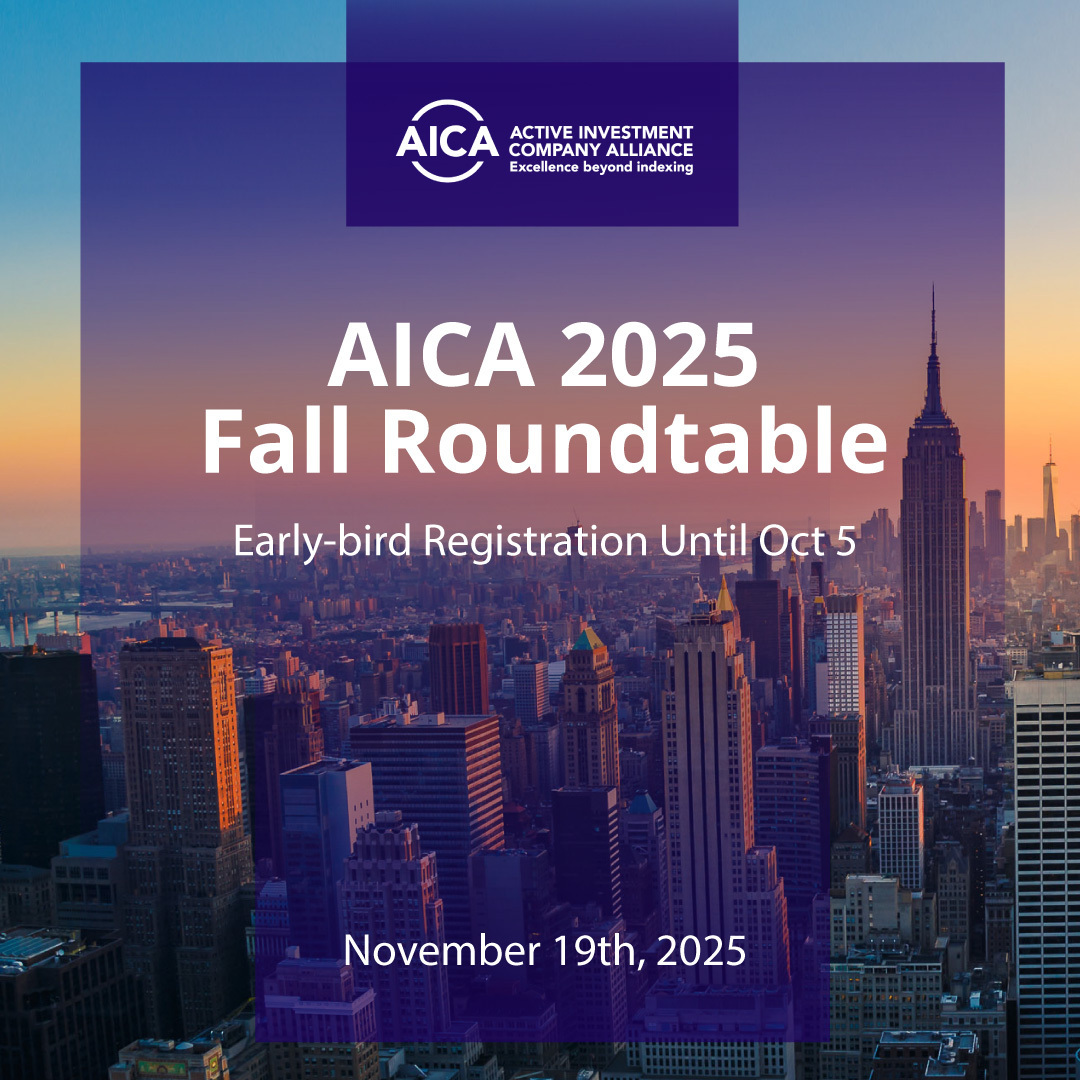AICA CEF Panel: Leveraged Finance Balances Portfolio Risk, Reward
As financial advisors question the future of the economy, a panel of leading asset managers at AICA’s 2023 Fall Roundtable said high-yield bonds, leveraged loans, and collateralized loan obligations (CLOs) provided performance-enhancing boosts to their managed portfolios this year, spelling good news for fixed income investors. With closed-end funds (CEF) currently trading at a discount to NAV, allocating to leveraged finance has helped cultivate yield, experts from Octagon Credit Investors, abrdn, Ares Management, and Nuveen said at the November 15, 2023, event in New York City.
The panel discussion, Managing Credit Risk in the Current Environment, also highlighted the risks of investing in closed-end funds amid roiling recessionary concerns.
One the question of the day, panelists generally agreed that interest rate hikes were over, barring an inflation flare-up or overheated economy. But therein lay the question: Will there be a soft landing?
“We are firmly in the window of optimism,” said George Westervelt, Head of Global High Yield at abrdn, of the current moment. He pointed to macro drivers and “a very, very resilient consumer” for keeping markets malleable in 2023. Optimism’s ripple effects: “Equities are up, the S&P 500 is up 17%, high-yield is up 8% … these are good returns in the face of rising rates,”Westervelt said. “You’re seeing risk assets do very well in that.”
Westervelt applies these insights in overseeing Abrdn Income Credit Strategies, a listed, $500 million CEF with the ticker symbol ACP.
Sounding a hopeful note, Westervelt praised the current moment’s spike in secured lending in high-yield bond markets. Growth is our next “worry,” he said. That spells tailwind for duration amid an environment that’s generating “cushion” for investors in the likelihood of a recession, he added.
Westervelt and the other panelists acknowledged that consumers are under great financial pressure. The consumer’s sustaining power, a troubling uptick in corporate loan defaults, and falling recovery rates were all top of mind as panelists discussed their strategies in allocating to leveraged finance vehicles.
Strategies
Gretchen Lam, Senior Portfolio Manager at Octagon, said rewarding CLOs that avoided default or loss has borne exceptional yield. “We’re seeing yields in the high teens in the secondary market,” she noted.
Lam manages the XAI Octagon Floating Rate & Alternative Income Term Trust, a listed CEF with the NYSE ticker symbol XFLT.
“Over the last six to nine months, we have favored CLO BB-rated tranches, and the reason for this is they offer in the current market both very high current yields in the range of 12-13%, as well as … a discount,” she said. “This is very attractive for an asset that, notwithstanding the very high yields, benefits from real structural subordination, which we do think will adequately protect investors in an environment where defaults are increasing.”
Also on the panel was Kristofer Pritchett, a Managing Director and Portfolio Manager in Ares Credit Group, which manages $269 billion in AUM as of September 30, 2023. That includes the Ares Dynamic Credit Allocation Fund, a listed CEF with the NYSE ticker symbol ARDC.
Pritchett explained that Ares uses CLOs in ARDC to enhance yield while driving greater levels of diversification. “We believe our focus on maintaining a flexible CLO allocation, alongside a core portfolio of loans and high yield, allows us to add that extra bit of yield to our portfolio without sacrificing credit quality,” he said.
Scott Caraher, Head of Senior Loans for Nuveen’s leveraged finance team, said quality also matters when allocating to leveraged loans. He suggested constructing portfolios in the current “bifurcated” loan market has been challenging, but that it has been satisfying to “clip yields of close to 10%” in the face of persistent market confusion about Fed policy.
The key for Nuveen, Caraher says, is to “balance loans versus high-yield in our funds where we can toggle between the two.”
Caraher oversees all of Nuveen’s public mutual funds and institutional funds and manages the Nuveen Credit Strategies Income Fund, a listed CEF with the NYSE ticker symbol JQC.
“The one benefit of inflation rolling over and feeling like we’re probably not going much higher with where rates are, you can start to have companies in the loan market where a lot of the inflation and rates are flipping from a structural headwind to a tailwind, with lots of crosscurrents between those markets,” he said. “We were all-in on loans over the last two years, and now it’s really trying to get more balanced between the two.”
He continued: “I think the next three years are going to be one of the most exciting times in the loan market. Find the names that are going to make it and invest in those, and we’ve started to do that.”
Risks
Caraher and other panelists made note of the rise in first lien debt and falling recovery rates in both the loan and high-yield bond markets.
“As we think about defaults and recoveriesand the overall outlook, certainly the experience in 2023 has seen much lower defaults than feared, but recoveries are low and likely to continue to be low in 2024,” said Lam. “It’s definitely something that we are very focused on as investors in the loan market, as well as investors in the CLO loan tranche market, as it has very real implications,” she added.
Caraher tells investors there will be a lot of “dispersion” in the coming years. “It goes back to really picking credit and avoiding the loan-only cap structure,” he said.
“So, if you can find those names, if you can pick those credits, your recovery rates are going to be higher than the average.”
To hear more valuable insights from this panel, register to access a replay and review the full agenda of AICA’s 2023 Fall Roundtable.


